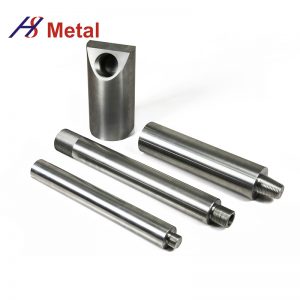Email:
sales@hypersolidmetal.comWhatsapp:
8615038522042
Email:
sales@hypersolidmetal.comWhatsapp:
8615038522042Tungsten electrode is a tungsten electrode made of materials with high melting point, corrosion resistance, high density, good thermal conductivity and electrical conductivity. Tungsten electrode is widely used in welding due to its properties. Tungsten electrodes are ground or polished and black rods. The final colors are all different and the difference can be distinguished. In tungsten electrodes, more importantly, their final color is different, and the tungsten content is also different. When welding, choose the right tungsten electrode to make welding easier and importantly get a high quality weld. Some important factors to consider in making the right choice are the type of power source (inverter or transformer), welding material (steel, aluminum or stainless steel) and material thickness.
Tungsten electrodes are used for TIG welding. They are tungsten alloy strips made by adding about 0.3%-5% of rare earth elements such as cerium, thorium, lanthanum, zirconium, yttrium, etc. into the tungsten matrix through powder metallurgy. Press machined, diameters range from 0.25 to 6.4mm, standard lengths range from 75 to 600, and the most commonly used specifications are diameters 1.0, 1.6, 2.4 and 3.2. The shape of the electrode tip is an important factor for TIG, when When using DCSP, the electrode tip needs to be ground into a pointed shape, and its tip angle changes with the application range, electrode diameter, and welding current. Narrow joints require a smaller tip angle. When welding very thin materials, a smaller tip angle is required. This is done with a low current, needle-like minimum electrode to stabilize the arc, while a properly grounded electrode ensures easy arc ignition, good arc stability and proper weld bead width. When welding with AC power, it is not necessary to grind the electrode tip, because when using the appropriate welding current, the electrode tip will form a hemispherical shape. If the welding current is increased, the electrode tip will become a bulb shape and may melt and contaminate the molten gold.
With the development and expanded application of tungsten electrode inert gas shielded welding, people have conducted more and more in-depth research on tungsten electrodes. In plasma arc welding, cutting and non-melting argon arc welding, thoriated tungsten electrodes were used in the past. However, due to the radioactive influence of thorium (the radiation dose reaches 3.60×105 Curies/kg), it will damage human health and pollute the environment. , thereby replacing the thoriated tungsten electrode with a cerium tungsten electrode with a cerium oxide content of 2 to 4%. In direct current direct current argon arc welding, the cerium-tungsten electrode is easy to start the arc, has less electrode burnout, and allows a higher welding current density than the thoriated tungsten electrode; while in AC argon arc welding, the cerium-tungsten electrode has greater burnout than the thoriated tungsten electrode. , the allowable range of welding current selected for cerium tungsten electrodes is smaller than that of thorium tungsten electrodes.
Thoriated tungsten electrodes are easy to operate and perform well even under overloaded currents. Many people still use this material and it is regarded as part of high-quality welding. Despite this, people are gradually turning their attention to other types of tungsten electrodes, such as cerium tungsten and lanthanum tungsten. Because the thorium oxide in tungsten-thorium electrodes produces trace amounts of radiation, some welders are reluctant to get close to them.



